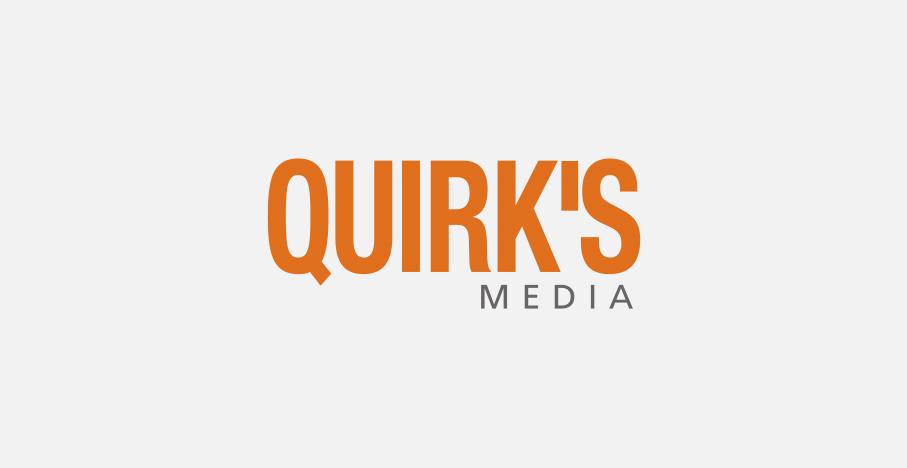Editor’s note: Lucy Davison is managing director at Keen as Mustard, a London marketing agency.
The Insights Association’s inaugural conference was a full-on content fest with back-to-back sessions from 7:30 a.m. on Tuesday, May 9 to 5:30 p.m. on Wednesday, May 10. I’ve learned that New Yorkers – and maybe all Americans? – certainly like to conference! I hardly had time to catch my breath let alone gather thoughts. Plus, I’ve still not made it to Katz’s.
The main theme that struck me from the two days was emotion and memory – both how emotion drives memory – how we can use it to create better, memorable experiences for our clients and the people we engage with – and how we can measure it. Agile research was also a core theme along with AI and machine learning – these are turning into buzzwords of MRX 2017.
Highlights? Ubercool founder and keynote Michael Tchong, both inspired and reassured me with his lively take on where the digital lifestyle and convergence of man (woman?) and machine is taking us. Why was I inspired? Disruption is an opportunity people! Innovation means growth. And why was I reassured? Well, I’m yet to fall in love with my robot vacuum cleaner but it was comforting that a video of scientists kicking a robot dog led to thousands of complaints! And a new word – screensucking – has entered my lexicon. Work it out.
Bringing emotional connections to what we do and how we deliver
Thomas Troch of InSites Consulting pinpointed the problem of research not driving change, citing his agency’s study which found that only 50 percent of MRX studies achieve this. He mentioned Pine and Gilmore’s Experience Economy to map out our stakeholder’s journeys and address their pain points in order to deliver empathy and create memorable solutions. Why not apply customer empathy to our own customers? This was a theme reinforced by the popular keynote on Day 2 from Anthony “Tas” Tasgal on the vital importance of storytelling to tap into emotion – and reach what he calls peak insightment.
A big hairy, audacious challenge (my words) was made by Samrat Saran of Anheuser-Busch InBev on redefining the role for corporate researchers: only get involved in the strategic stuff, let your brand and marketing teams do the testing and focus on how you can add value to the enterprise as a whole. This was reinforced by the interview of Radha Subramanyam, the president of Insights Research at iHeartMedia, by Schwan’s Kelsy Saulsbury. Subramanyam urged researchers to be business leaders before insights leaders and to use the filter of biggest business question in prioritizing work with stakeholders.
Agile, AI and machine learning
The rise of qual in the world of big data was cited by several participants (including Airbnb) as adding real value to insight. But how to do it fast enough and integrate with the speed required by corporate researchers? At the session “Qual be nimble qual be quick,” Katrina Noelle from Scoot Insights outlined how she has radically reduced the time frame for qual projects. She calls it “in-person synchronous interaction.” Stephen Cribbett from Dub urged us not to go so fast as to stop thinking at all but to use speed to automate some elements and free up thinking time.
Sonos and BeyondCurious shared a great case study of their use of agile insight to develop the concept and design for the new store in New York’s Soho. Even better, they threw a party there in the evening for us to experience the results of their project. The store is designed around a series of listening booths created as mini sitting room pods – a truly immersive retail experience driven by the research program and resulting insight. We held our own little party in one pod with soundtrack provided by some delightful local musicians and journalists while Sonos provided the wine. It was the first time I got inside of an insight case study, so it made for a really memorable and engaging experience!
Segue to Ana Brant from Dorchester Collection Hotels which is the closest I’m ever going to get to staying in one of these palaces (Beverly Hills Hotel, Dorchester London, Plaza Athénée Paris … you get the idea). Her presentation did not disappoint with visually elegant slides and a tale about her learnings on the path to becoming the haute couture of hotel brands. Brandt talked about going beyond customer satisfaction and turning pain points into pleasure; and it was indeed a pleasure to hear her mantra including the use of AI tool Metis which she programs to scrape the Web, distil findings and create an animated movie from the feedback. I’d like to have seen that in action.
Finally, I really enjoyed the keynote from Eric Noble of The Carlab on taking risks and the art of omission. Taking human centric design as his philosophy he urged us to use simple, clear and above all emotional connections to understand the values of customers and use that to drive design. His less is more approach was very refreshing.
